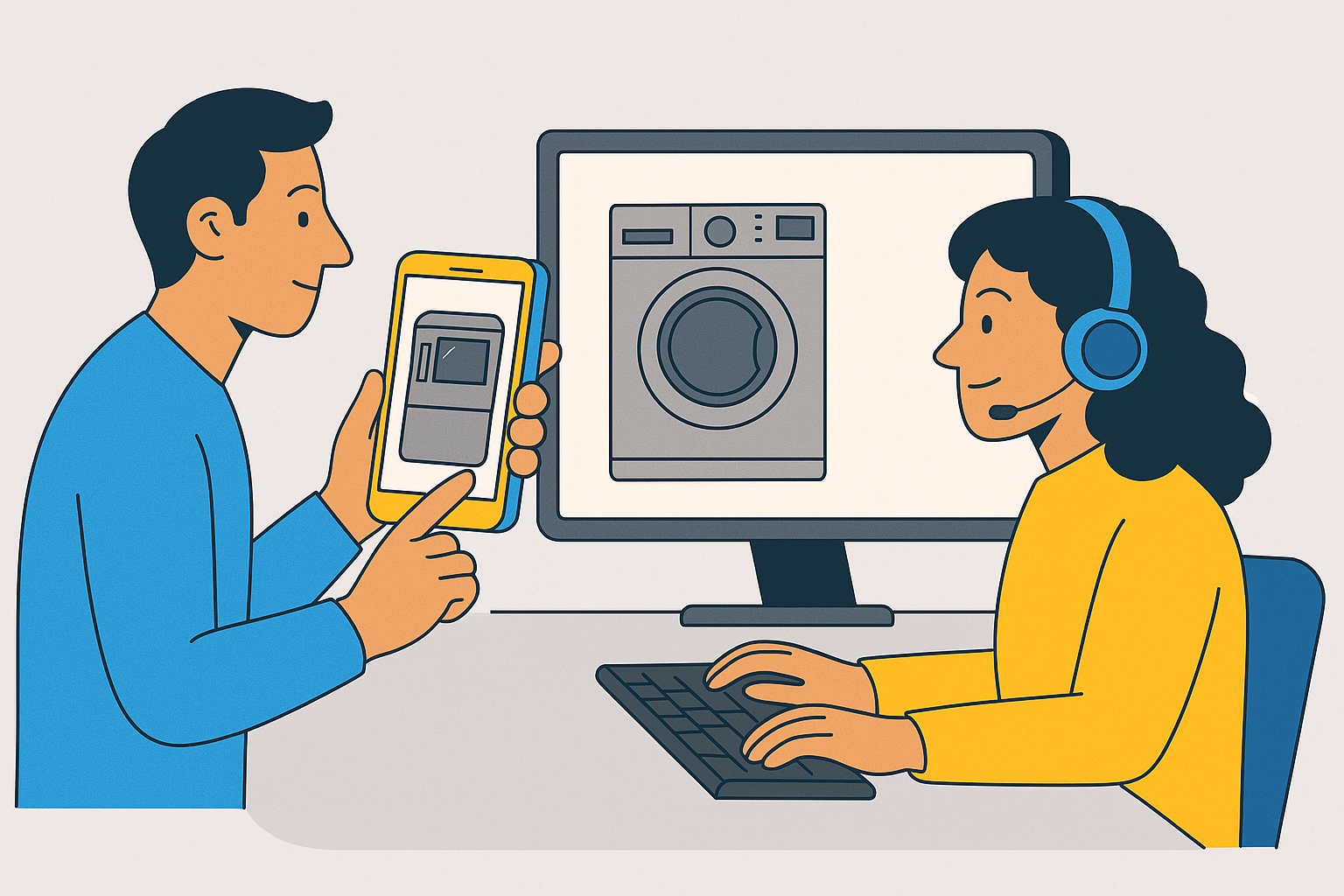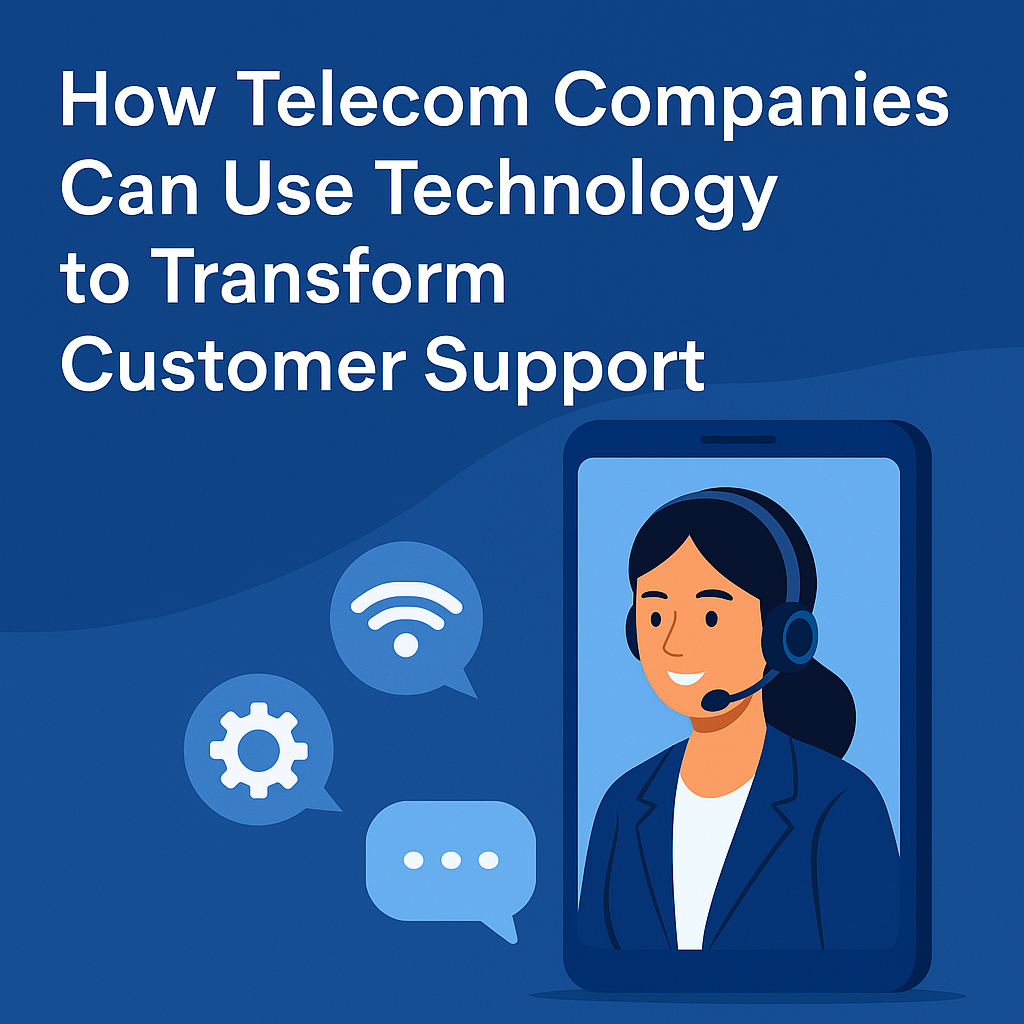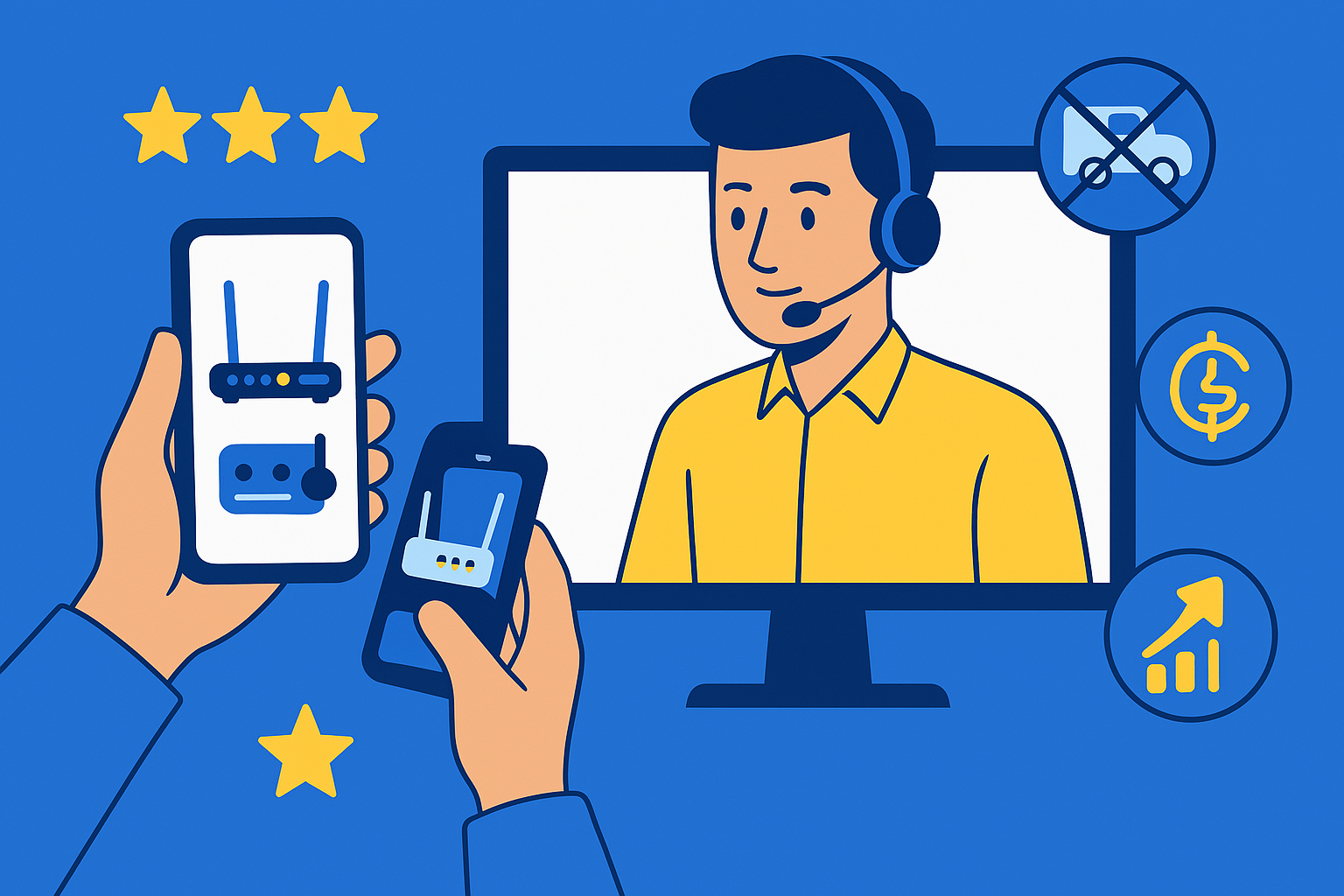How Visual Remote Assistants Are Redefining Customer Support in 2025
Introduction
Customer support in 2025 isn’t just about being helpful—it’s about being instant, intuitive, and immersive. In a world where two-day delivery now feels slow and users expect real-time everything, the bar for service has never been higher. Patience is out. Personalization is in. And businesses can no longer afford to stumble through multi-step troubleshooting scripts or clunky help desk emails.
Enter Visual Remote Assistance (VRA) —a tech-forward revolution that’s rewriting the rules of support. Instead of telling, agents can now show. Instead of customers waiting, they’re getting answers in real time. Think FaceTime meets augmented reality, but for fixing problems, not catching up with friends.
Whether it’s a field tech walking someone through a fix via video or a sales rep closing deals face-to-face from miles away, VRA delivers faster resolutions, slashes operational costs, and elevates the customer experience to something that actually feels like care—not a chore.
What is Visual Remote Assistance?
At its core, Visual Remote Assistance is the digital antidote to outdated support models. Unlike traditional methods—phone calls, chatbots, endless back-and-forth emails—VRA bridges the physical and digital divide. It lets support teams see the problem through a customer’s camera, then solve it using real-time video, augmented reality overlays, and interactive guidance tools.
But the magic isn’t just in the visuals. Today’s VRA platforms are smarter, sleeker, and more seamless than ever. Take Blitzz, for instance—its app-free interface lets customers connect instantly without downloads, while built-in AR features like live annotations and object recognition make guidance precise and intuitive. Or look at Salesforce, which has integrated visual support directly into its platform, syncing effortlessly with CRMs like Zendesk and ServiceNow to create a unified, frictionless experience.
From on-the-spot hardware diagnostics to guided inspections and virtual sales demos, VRA isn’t just a tool—it’s a transformation. One that empowers agents, delights customers, and redefines what "support" even means.
The Core Ways VRA is Transforming Customer Support
The promise of Visual Remote Assistance isn’t hypothetical—it’s happening now, reshaping how support teams operate and how customers experience help. Here’s how VRA is delivering tangible impact across the board:
1. Faster Issue Resolution
Traditional support often plays out like a frustrating game of charades—customers struggling to describe what they see, agents trying to interpret it from miles away. VRA ends the guesswork.
With real-time visual context, agents can immediately assess the issue firsthand, cutting down long explanation loops. Instead of asking a dozen clarifying questions, they’re looking at the problem directly—no translation needed.
Add AR-guided support into the mix—live pointers, screen annotations, and object recognition—and customers get crystal-clear directions. It’s precision help, not hopeful guessing.
2. Reduced Operational Costs
Every site visit avoided is a line item saved. With VRA, support teams can resolve complex issues remotely, drastically reducing the need for dispatching field technicians.
This isn’t just about saving money—it’s about doing more with less. Businesses using visual assistance report a notable rise in first-time fix rates, thanks to sharper diagnostics and better agent-customer collaboration before any wheels hit the road.
3. Enhanced Customer Experience
The best support experiences are the ones that feel invisible—seamless, intuitive, and fast. VRA delivers just that.
App-free access means no download delays, no setup hassles—just instant help. And with live, interactive guidance tailored to their specific situation, customers get support that feels more human, less robotic.
The result? Higher satisfaction scores, deeper trust, and stronger brand loyalty. Because when support is this smooth, it sticks.
4. Improved Productivity for Support Teams
Support isn’t just about solving problems—it’s about doing it efficiently at scale. VRA gives agents the superpower to handle more cases, faster.
Agents can resolve multiple tickets in less time, especially when they can visually confirm and address issues on the spot. Meanwhile, automated session recordings feed into training and quality control systems, turning every call into a learning opportunity.
Paired with AI-driven insights, companies can continuously optimize workflows, spot patterns, and level up agent performance with data-backed precision.
5. Lower Product Returns
Returns are expensive. They also signal frustration, confusion, or misalignment. VRA helps nip all three in the bud.
With on-the-spot visual diagnostics, many issues that once triggered a return—think minor setup errors, misunderstood features—can be resolved instantly.
This not only prevents unnecessary returns, it preserves customer goodwill and protects the bottom line. When customers feel supported, they’re far less likely to give up on a product—or a brand.
VRA in Action: Cross-Industry Applications
Visual Remote Assistance isn’t a one-trick tech—it’s a cross-industry catalyst. From hardware fixes to high-stakes inspections, VRA is proving its versatility in the field, on the floor, and even in the customer’s living room. Here’s how different sectors are harnessing its full potential:
Field Service
Field service has always been a logistical maze—dispatching technicians, scheduling site visits, managing on-site diagnostics. VRA untangles all of it.
Companies are now using remote visual guidance to walk technicians—or even customers—through complex procedures. Instead of sending someone across town (or across the country), experts can provide step-by-step help in real time, using live video and AR overlays to guide hands without physically being there.
The result? Fewer truck rolls, faster resolution, and a massive boost in operational efficiency.
E-commerce
Bought it, but don’t know how to build it? Welcome to the e-commerce pain point. Whether it’s furniture that looks like modern art or a gadget that won’t sync, post-purchase friction is real.
With VRA, brands can offer real-time assembly or troubleshooting support, turning frustration into delight. No need to dig through confusing instruction manuals—customers can show the problem and get guided assistance on the spot.
It’s support that scales with the modern shopper’s expectation: fast, visual, and app-free.
Sales
Yes, even sales is getting a VRA glow-up.
Imagine a rep connecting with a potential client via live video, walking them through a product demo while using AR to spotlight features in real time. No slide decks. No delays. Just immersive, transparent interactions that build trust and accelerate conversions.
In a world increasingly driven by digital-first relationships, face-to-face engagement—virtually—makes the difference.
Inspections
Compliance doesn't wait for travel plans. And in industries like manufacturing, insurance, and construction, time-sensitive inspections are critical.
Enter remote inspections powered by VRA. Platforms like Blitzz enable inspectors to verify site conditions, validate assets, and document compliance through live video and AR-enhanced sessions—all without stepping foot on-site.
It’s faster. It’s safer. And it keeps regulatory timelines intact without compromising on accuracy.
Each of these industries may look different on the surface—but they share a common need: faster, smarter, more human support. And that’s exactly what VRA delivers.
Why 2025 is the Year to Adopt VRA
If 2020 was the wake-up call for digital transformation, 2025 is the year businesses double down. Customer expectations have evolved—support needs to be faster, smarter, and more human than ever before. Visual Remote Assistance is no longer a nice-to-have—it’s the new baseline.
It aligns with modern customer expectations
Consumers don’t just want support—they want instant, intuitive, personalized support. VRA delivers just that. It meets people where they are, in the moment, and solves problems visually and collaboratively. No delays. No downloads. No disconnects.
It’s scalable and intelligent by design
Thanks to tight integration with CRMs like Salesforce, Zendesk, and ServiceNow, VRA tools don’t live in a silo—they’re woven into existing workflows. Add in AI-powered insights and automation, and businesses can scale their service capabilities without sacrificing quality.
Session recordings, analytics dashboards, and real-time feedback loops turn every interaction into fuel for improvement.
It drives cost savings and customer loyalty
VRA reduces truck rolls, slashes return rates, and boosts first-time fix performance. But beyond the bottom line, it builds something even more valuable: trust. When customers feel seen and heard—literally—they stick around.
Platforms like Blitzz are leading this charge, offering app-free, frictionless adoption that integrates smoothly with existing tech stacks. No major overhauls, just immediate impact.
Conclusion: The Future Is Visual
Visual Remote Assistance isn’t a trend—it’s a transformation. In 2025, it stands at the intersection of innovation and necessity, turning once-fragmented support experiences into seamless, visual collaborations.
By combining real-time video, AR-enhanced guidance, and tight system integration, VRA helps businesses move from reactive to proactive—delivering the kind of support that customers remember, and competitors envy.
So if your support strategy still relies on email chains and long call queues, it’s time to turn the page. The future isn’t just automated. It’s not just digital.
It’s visual.
🔧 FAQ: Visual Remote Assistance & the Future of Customer Support
What is a visual remote assistant in customer support?
A visual remote assistant is a real-time, video-based support tool that enables experts to guide customers or field technicians through complex tasks visually. It bridges the gap between virtual and in-person help, improving resolution speed and customer satisfaction.
How do visual remote assistants improve customer support in 2025?
In 2025, visual remote assistants streamline support workflows by offering instant, hands-on guidance—reducing downtime, preventing repeat visits, and enhancing customer trust. With AI enhancements, they also personalize and optimize each interaction.
What industries benefit most from visual remote assistance?
Field service, telecommunications, utilities, manufacturing, healthcare, and smart home tech are just a few sectors seeing major gains. Anywhere complex equipment or systems are in play, visual remote support delivers real value.
Is visual remote support secure and compliant?
Yes. Leading platforms like Blitzz prioritize enterprise-grade security, offering encrypted sessions, role-based access, and audit trails to ensure compliance with industry standards like HIPAA, GDPR, and SOC 2.
How can businesses get started with visual remote assistants?
Adopting visual support is simple: platforms like Blitzz integrate seamlessly into your existing customer service stack. Start with a pilot program, train your team, and scale based on use case and ROI.



